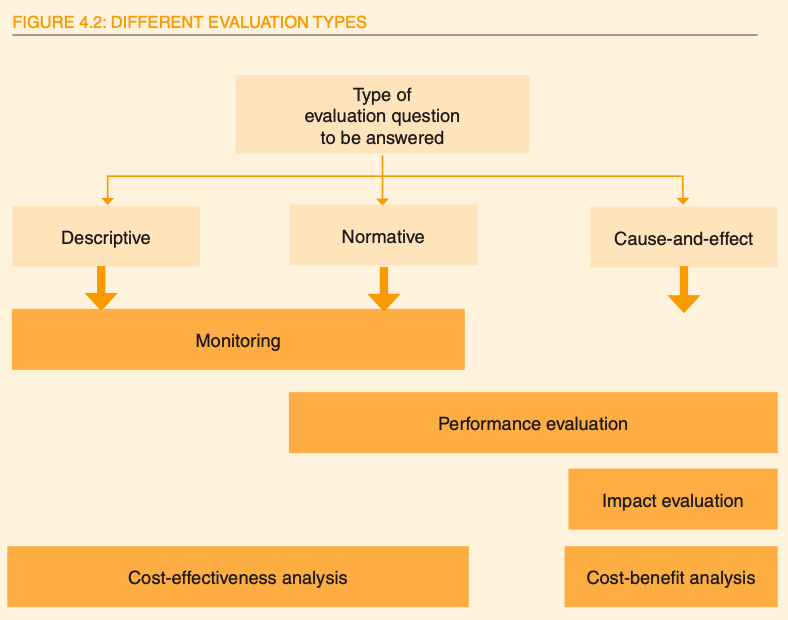Inspired by ILO’s Guide on Measuring Decent Jobs for Youth: 4 – Enhancing youth employment learning through evaluation we would like to explain different types of evaluation and how they complement each other in the whole project cycle.
Just to revise some of the evaluation theory, the following definitions might come useful:
An evaluation is ‘an evidence-based assessment of strategy, policy or programme and project outcomes, by determining their relevance, impact, effectiveness, efficiency and sustainability’.
Monitoring is an ongoing regular process of checking whether all actions and interventions of the project are taking place as planned. It helps to identify problems and to fix potential risks along the way. Monitoring ensures there is a regular and repeated feedback from those who are involved in the project and that is how it helps to prevent failure of the whole project.
Performance Evaluation
‘A performance evaluation assesses the quality of the service delivered and the outcomes (results) achieved. It typically covers short-term and medium-term outcomes, but not casual impact.’
Impact Evaluation
‘An impact evaluation establishes a causal link between a programme or intervention and a set of outcomes. An impact evaluation tries to answer the question of whether a programme is responsible for the changes observed in the outcomes of interest.’
Cost-effectiveness and cost-benefit analyses
‘Cost-effectiveness analysis (CEA) measures the cost per output or outcome.
Cost-benefit analysis (CBA) weighs the total expected costs against the total expected benefits (outcomes) of an intervention, where both costs and benefits are typically expressed in monetary terms.’
Now, how are these types of project evaluation related? They complement each other in use, timing and ends and all of them are neccessary for an evaluation which enables us to learn from our mistakes and successes. Here is how ILO’s Guide authors distinguish particular types according to evaluation questions:

On-going monitoring and regular performance evalution help us to keep going on through the project while impact evaluation enables to see whether our actions made any real changes. Cost-effectiveness ans cost-benefit analyses show us how well we manage and use our resources. Do you want to know more? The whole text is based on the Chapter 4 Enhancing youth employment learning through evaluation of International Labour Organisation’s Guide on Measuring Decent Jobs for Youth: Monitoring, evaluation and learning in labour market programmes.







